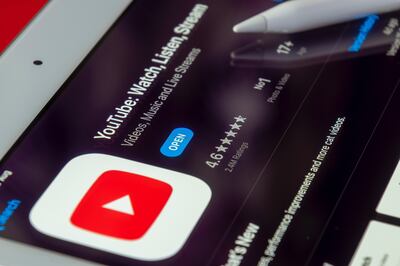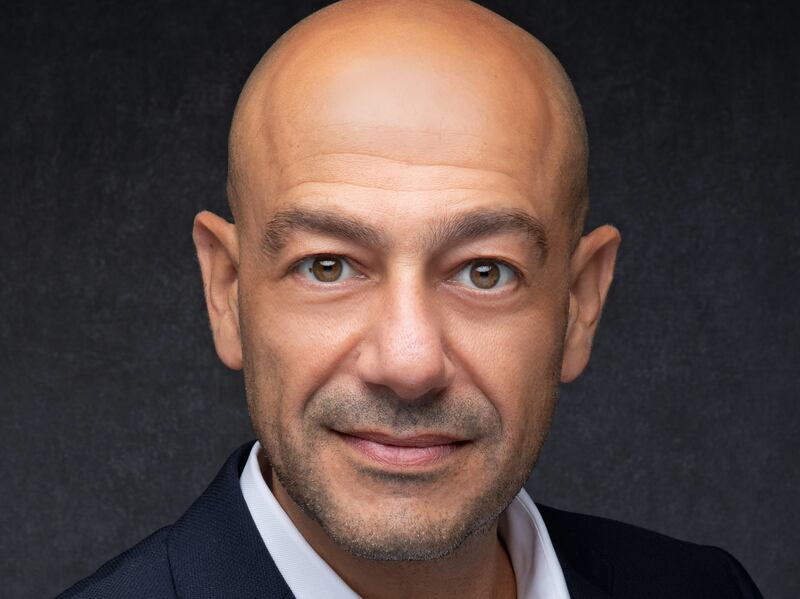YouTube has significant plans to help boost emerging and existing Arab content creators in the year ahead.
The regional branch of the video-sharing platform is reinforcing several of its initiatives, as well as launching new ones, with the aim of bolstering a diverse range of voices from the Arab world.
“We’re going to continue to support and give millions of Arabic speakers the tools they need to tell the stories they tell,” Tarek Amin, director of YouTube in the Middle East and North Africa, tells The National.
When YouTube launched its Partner Programme in Mena in 2012, a whole ecosystem of content creators, viewers and advertisers came alive in the region, Amin says. The programme, which rolled out in the US in 2007, helped creators earn revenue from the advertisements shown on their content. The initiative was the springboard for a new generation of storytellers and talents, many of whom have gone on to become widely successful across several media platforms, including the smart-talking comedy puppet Abla Fahita, and the youth-led Saudi show Takki.
“Since then, we’ve added a lot of tools along the way to support creators, and to help them be able to breakout and monetise through the platform,” Amin says.
YouTube Shorts
YouTube Shorts is the latest addition to that toolbox, Amin says.
“We’re very excited about it, and we believe it will play a big role as we see that shift to mobile, and see a whole new generation of creators coming into YouTube.”

Earlier this month, YouTube made its global $100 million fund available to short-form video creators from the UAE, Saudi Arabia, Bahrain, Kuwait, Egypt, Algeria, Iraq, Jordan, Lebanon and Morocco.
Channels can earn anywhere between $100 to $10,000 each month, with bonus amounts adjusted based on the channel’s Shorts' total performance and audience location.
“The advantage of this fund is that anybody is eligible to participate,” Amin says. “Each month, there will be hundreds of creators that are going to receive from the fund and that is based on engagement and views.”
The YouTube Shorts Fund, Amin says, is the first step towards supporting the next generation of mobile content creators.
Shorts rolled out in July 2020 and allows people to create 60-second clips on their mobile phones. As of July 2021, YouTube says the feature receives more than 15 billion daily views.
While bite-sized videos have only recently gained mass appeal, Amin says the form has a foundational significance in YouTube’s history.
“An interesting fact is that the first YouTube video, which came out in 2005, was an 18-second video,” he says. “So it seems we’ve been at this for a while.”
Gaming
Over the past two years, Amin says there has been a marked growth in gaming-related content on YouTube from the Arab world. According to a post the company published on its blog, YouTube logged more than 800 billion gaming-related views in the first half of 2021, with over 90 million hours live-streamed and more than 250 million uploads.
The Arab world is a notable contributor to these numbers, Amin says. “We’ve got the likes of AboFlah and creators from across the region that are currently in the top 10 in the global lists,” he says.
The Mena region, he says, is one of the few markets where there are more women making content for gaming than lifestyle, with prominent creators such as Saudi YouTuber Meshael MR, who has more than 400,000 subscribers on her channel.
Amin says it is a trend that is expected to grow and contribute to the overall expansion of gaming content coming out of the region.
“Gaming creators are actually spearheading a lot of the launches that are coming across the platform. It’s exciting to see.”
Batala
Among the initiatives aiming to support female content creators from the region is Batala, a platform that showcases content created by Arab women.
When the channel was first launched in 2016, there were only five female creators from the region. According to a YouTube blog post published in October 2021, there are now more than 150 channels run by women from the Arab world, with a combined following of more than a million subscribers.
The channel was revitalised earlier this year to embrace a new generation of creators, highlighting channels that provide divergent content include gaming, music, books, cooking and lifestyle.
“It wasn’t about starting fresh as much as it was giving it more focus and adding more components to the programme,” Amin says. “This year, we had the most number of sessions that ran for Batala. We’re hoping to do more next year.”
Monetisation
A big component of supporting new and existing creators is building a monetisation programme that helps them diversify their revenue, Amin says.
In 2018, YouTube launched its channel memberships feature, which allowed creators to offer extra content and video previews to subscribers for a monthly fee. This year, the video platform launched Super Chat and Super Stickers, a new revenue stream that helps creators boost their earning potential through the YouTube Partner Programme.
Viewers watching a YouTuber’s live stream or premiere with live chat enabled can purchase Super Chats or animated Super Stickers that get pinned to the top of the chat. The higher the purchasing amount, the longer it stays at the top of the feed.
“These are additional ways and opportunities for [creators] to continue to diversify their revenue,” Amin says. “We see the ecosystem growing and the greater economy growing and we’re constantly looking at how we can support them and help grow their businesses on YouTube.”







